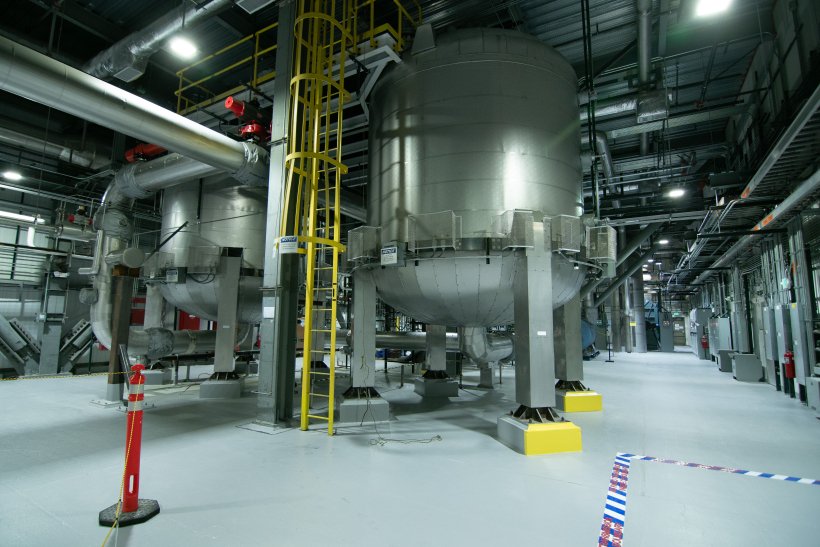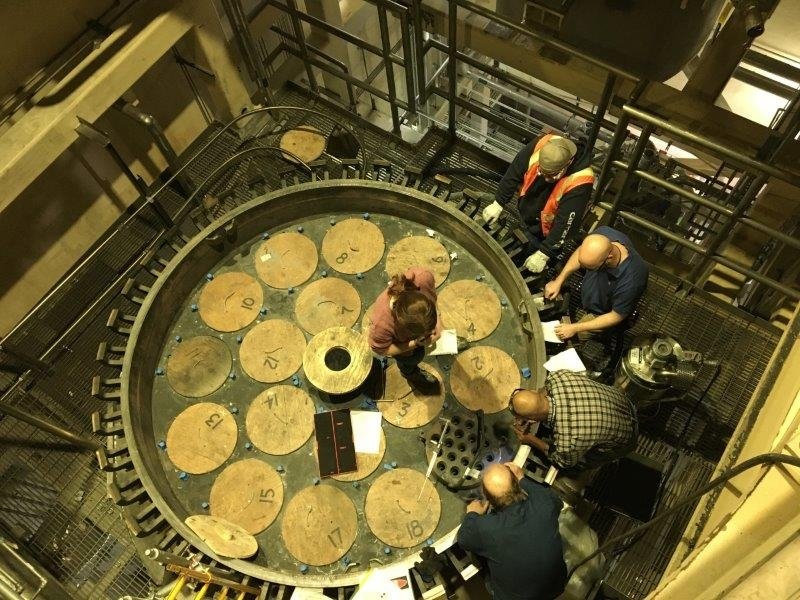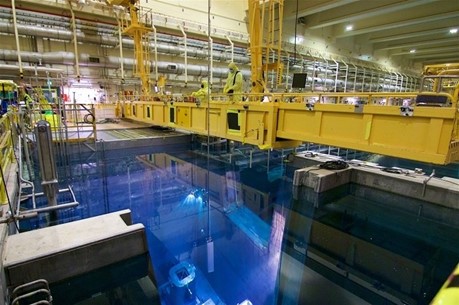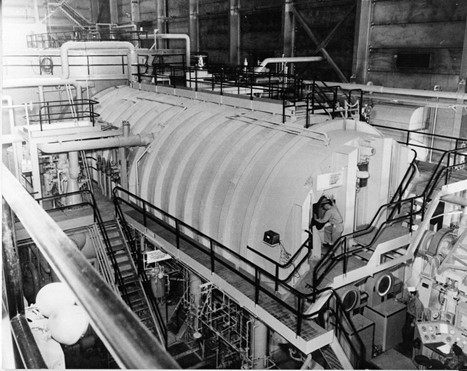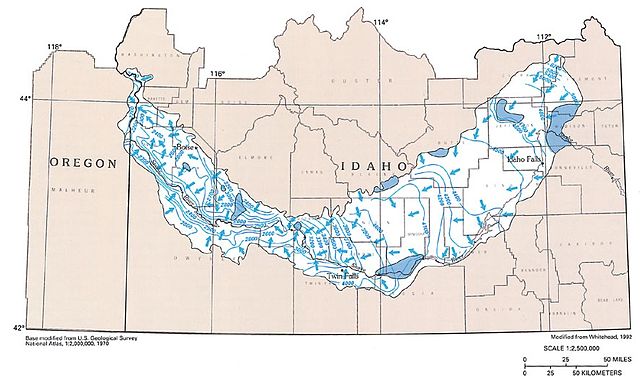ICP crews inspect transuranic waste drums to ensure they comply with shipping requirements. (Photo: DOE)
The Department of Energy’s Idaho Cleanup Project (ICP) has improved transuranic waste operations to address aging waste containers being stored at the Advanced Mixed Waste Treatment Project (AMWTP) at the Idaho National Laboratory Site, the DOE’s Office of Environmental Management announced on December 10.
The S5G prototype, which was constructed to simulate submarine operations and could mimic ocean-like conditions, is positioned inside a subgrade basin. (Photo: IEC)
The Department of Energy is proposing to fully decommission the Submarine 5th Generation General Electric (S5G) prototype at the Naval Reactors Facility on the Idaho National Laboratory site. Along with the Environmental Protection Agency and the state of Idaho, the DOE has initiated a 30-day public comment period (ending November 14) on the planned end state for the facility and its defueled reactor vessel.
A view of two vessels that each contain approximately 30,000 pounds of granulated activated carbon, used to remove mercury from process off-gas during IWTU operations. (Photo: DOE)
The Department of Energy’s Office of Environmental Management said Idaho’s Integrated Waste Treatment Unit (IWTU) is set to resume radioactive liquid waste treatment operations early next year after crews replaced carbon material from two plant vessels. The IWTU was shut down for an unplanned outage on September 6 to address elevated mercury concentrations in the plant’s granulated activated carbon (GAC) beds, according to Defense Nuclear Facilities Safety Board (DNFSB) reports.
Crews demolish one of two massive steam condensers at the Naval Reactors Facility’s A1W prototype reactor facility in Idaho. Click photo to enlarge (Photo: DOE)
The Department of Energy’s Office of Environmental Management said that crews at the Idaho National Laboratory site are making “significant progress” decommissioning the Submarine 1st Generation Westinghouse (S1W) reactor, the prototype pressurized water reactor that supported the development of the USS Nautilus, the world’s first operational nuclear-powered submarine.
The Integrated Waste Treatment Unit at the Idaho National Laboratory Site. (Photo: DOE)
The Department of Energy’s Office of Environmental Management (EM) said that the Integrated Waste Treatment Unit (IWTU), the radioactive liquid waste treatment facility at the Idaho National Laboratory Site, began its final heat-up in December prior to initiating radiological operations, planned for early this year.
IWTU crews were to follow a prescribed incremental process as the facility transitions from simulant to sodium-bearing waste (SBW), according to EM.
Workers inspect the IWTU’s process gas filter before the current confirmatory run. (Photo: DOE)
The Department of Energy’s Office of Environmental Management (EM) said it continues to make progress toward the start of operations of the Idaho National Laboratory Site’s Integrated Waste Treatment Unit (IWTU), having completed a final test run of the facility.
Operation of the IWTU, which was constructed to treat approximately 900,000 gallons of radioactive liquid waste, has been delayed a number of times, most recently due to supply chain issues.
An aerial view of the Radioactive Waste Management Complex at the Idaho National Laboratory site. (Photos: DOE)
Idaho Gov. Brad Little, attorney general Lawrence Wasden, Idaho legislators, county and city representatives, and the Department of Energy’s cleanup program management staff gathered at the Idaho National Laboratory site on March 30 to mark the completion of a cleanup project that helps protect the Snake River Plain Aquifer and fulfills a commitment with the State of Idaho.
Spent nuclear fuel handlers move the last ATR fuel to an awaiting cask in the CPP-666 basin. (Photo: DOE)
The last spent nuclear fuel elements from Idaho National Laboratory’s Advanced Test Reactor (ATR) have been retrieved from a water-filled storage basin and transferred to a nearby dry-storage facility in accordance with a 1995 agreement with the State of Idaho, the Department of Energy’s Office of Environmental Management (EM) announced this week.
The IWTU liquid nitrogen storage system at the DOE’s Idaho National Laboratory Site. (Photo: DOE)
The Department of Energy’s Office of Environmental Management (EM) stated on February 22 that its Idaho National Laboratory Site contractor is operating the final test run of the Integrated Waste Treatment Unit (IWTU), running waste simulant through the facility to ensure the plant’s performance and personnel proficiency for upcoming radiological operations.
The interior of the Submarine 1st Generation Westinghouse prototype, located at the Naval Reactors Facility on the INL site, circa mid-1950s. (Photo: DOE)
The Department of Energy’s Office of Environmental Management (EM) announced on February 10 that it is set to deactivate and demolish the prototype for the reactor used for the USS Nautilus, the world’s first operational nuclear-powered submarine and the first submarine to complete a submerged transit of the North Pole.
The Snake River Plain Aquifer
The Department of Energy’s Office of Environmental Management will award the Idaho Cleanup Project contract for the Idaho National Laboratory site to Idaho Environmental Coalition (IEC), of Tullahoma, Tenn. The contract has an estimated ceiling of approximately $6.4 billion over 10 years, with cost reimbursement and fixed-price task orders to define the contract performance.



